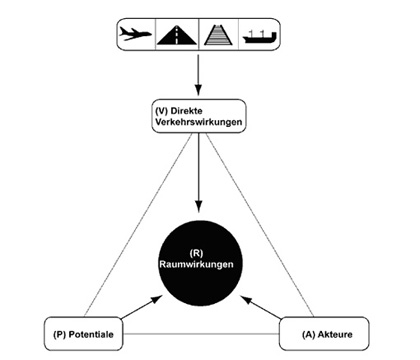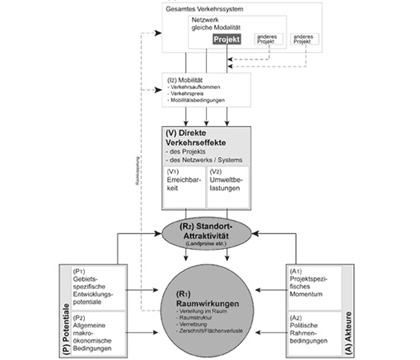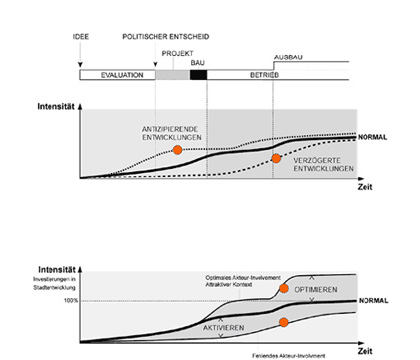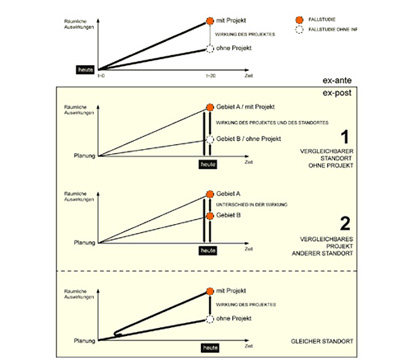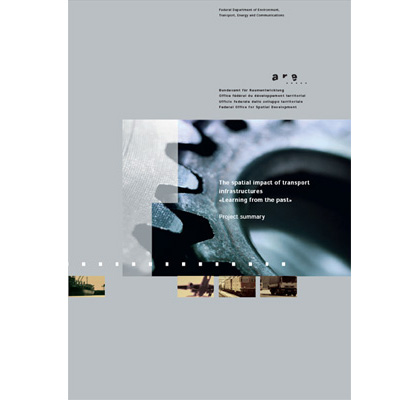client: Swiss Federal Office for Spatial Development ARE; several Swiss Cantons
team: Güller Güller architecture urbanism, with: Synergo, DREIF, Inregia, NEI, PHAB architects
2001-2002: methodology for the ex-post analysis of the spatial impact of transport infrastructures
The approach proposed in the methodology for the ex-post analysis replaces a direct link between transport infrastructure changes and spatial effects by a complex system of interaction (the so-called tripod of explanatory factors) between transport infrastructure changes, actor behavior and present potentials, in the generation of certain spatial effects. Infrastructural changes per se do not induce any spatial effects. One needs to know 'where the seeds are falling' (potentials, context) and 'who is taking care of them' (actors).Spatial effects evolve over time. Every project phase (conception, evaluation, planning, construction, use and eventually an extension) knows its own patterns of interaction of the three explanatory factors. Depending on potentials and actors, some spatial effects may happen ahead of time, others delayed; some may be bigger then expected, others smaller. The absence of a visible or measurable effect does not mean 'no effect at all': it may just mean 'no negative effect'.
In order to know the extent of an effect and if it is early or late, the investigations focusing on the perimeter of influence of the project itself are complemented with comparative analyses in so-called 'control perimeters' ideally differing from the project perimeter in one of the explanatory factors, e.g. a perimeter where no comparable project was realized, but where actors and potentials are more or less the same.
2002-2006: four case studies
In order to test the methodology, and to get first results, four case studies are undertaken, concerning four diverse projects: the regional railway system of Zurich, the transport system in the Magadino plain in Ticino, the Vereina railway tunnel in Eastern Switzerland, and the Vue-des-Alpes road tunnel in Western Switzerland. Every case study is conducted by a team of local experts under the guidance of the Federal Office for Spatial Development and the methodological survey of GGau.
2006-2007: updating the methodology and establishing a national monitoring system
On the basis of the results of the four case studies, the methodology will be fine-tuned.
At the same time, a national monitoring system for surveying the spatial impact of new transport infrastructure projects such as the trans-alpine railway tunnels (NEAT) or the completion of the national highway system, shall be put in place. At its basis will be the complex system of interactions of the explanatory factors, the development and influence of which will be measured with indicators derived from the case studies as being the most relevant and efficient.






